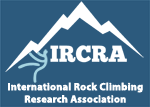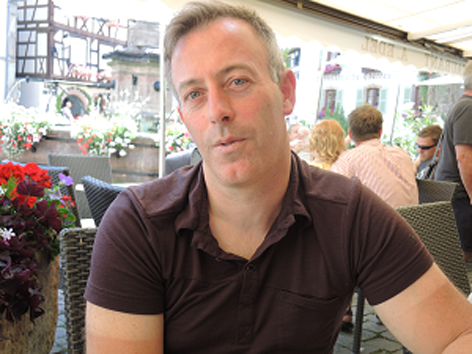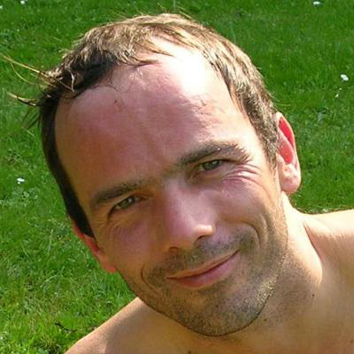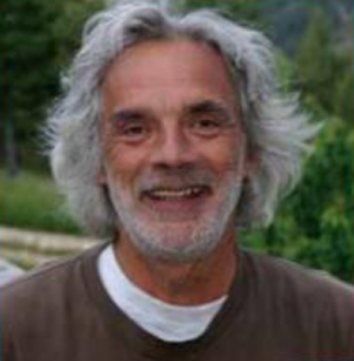 |
Program, organization, registration and submission to the IRCRA 2018 congress
8-14 Jul 2018 Chamonix (France)
|
Social sciences dayOn July 11, 2018, we will devote an entire day to the social sciences to understand the factors that led to the emergence of sportivization until Olympic recognition under a generic title: The three dimensions of climbing sportization
Introduction keynote: Olivier AUBEL, Senior lecturer at the Sport Sciences Intitute of Lausanne University, SWITZERLAND
In 1989 a symposium was held in Chamonix at national school for skiing and mountaineering (ENSA). That was a great opportunity for rock climbing community to compile all knowledges in the fields of social, human and life sciences. Today, thirty years later, the community will be back at the same place within a rock climbing environment that have undergone many changes. In this part of the IRCRA congress dedicated to social and economic issues, our purpose is to describe and analyze these changes and to engage the small community of searchers that work on rock climbing. As many outdoor sports, rock climbing evolution could be seen as a sportization process in three dimensions: institutionalization (1) abstraction/artificialization (2) and commodification (3). By this process of sportization, emerging rock climbing modalities are increasingly closer to the sport dominant model. The aim of the first keynote is to present and discuss this process and its consequences. We have to add two things. At one hand we need to consider that well known sponsored climbers and competitors are only a minority of climbing community which enables them in part to subsist. A growing part of climbing audience in climbing gym, but also an aging population of free and sport climbers, still be seen on crags and looking for constantly renewed climbing destinations: USA, Spain, Greece, Australia, South Africa or Argentina… On the other hand, we consider that sportization process is a cumulative evolution that drops on his path some more or less sporty modalities. It’s also happened that some climbing modalities appear in reaction to sportization process such as vertical dance, artificial or traditional climbing. To that end, if the sportization process described by Elias and Dunning (1986) is a euphemizing way to engage the body in a safer and aseptic environment, this evolution is taken backward by climbers like Alex Honnold with his soloing of Free Rider on El Capitan. This consideration leads us to understand that the followers of these less sporting modalities could be reluctant to climbing sportization and more to Olympic inclusion. Henceforth, the integrity of climbing’s ethic need to be debated. So, we will consider these three dimensions describe above during this sociological day of IRCRA congress dedicated to socio-economic approaches. For each of these three dimensions, we will propose a keynote and oral communications: two additional communications will be add on each part of the program
Institutionalization and ethic of rock climbing in debate: Call for communication: Since 1980’s climbing in Franceis doubly institutionalized with his recognition by mountaineering governing bodies and the structuration of a competition system. The discipline is recognized in 1987 by the French mountaineering federation (FFM) by the adjunction of an “E” for “escalade”. At the international level, the UIAA, the mountaineering governing body, officially recognized sport climbing in 1988. In 2007, as a turning point in sport climbing empowerment, the International Federation for Sport Climbing (IFSC) was founded. The process was somehow completed in 2010 by the IOC recognition of the IFSC. Since the 1980’s, this institutional recognition process is concomitant of (and generated by) the organization of national and international competitions. In 1988, the first climbing World Cup is created under the UIAA authority. This institutionalization peaks with the climbing inclusion in the Olympic program in Tokyo 2020. This process is well known in France (Hoibian, 1997, Aubel 2005, Gloria, 2006). At the international level, a recent publication (Batuev & Robinson, 2018) address the question of rock climbing institutionalization from his recognition by governing bodies to the Olympic inclusion. This part of our works on this issue we want to receive communications proposal that will lead us to understand the determinant of this process and its consequences.
Keynote 1. The issue of climbing Olympic Inclusion. Marc LE MENESTREL. Department of Economics and Business - University Pompeu Fabra /INSEAD - SPAIN
Marc Le Menestrel conducts research at the highest level on decision process in business, especially when it’s articulated with ethical issues. But Marc is also one of the most representative actor of climbing sportization. He is known since the beginning of eighties for his contribution to progression of extremes difficulties but also for his early participation to the competition system. Both for his academic positioning and his background as world climbing athlete, Marc is probably the most suitable person for thinking the interaction between olympic inclusion and climbing ethic. His works on this issue has led to a charter of climbing ethics for IFSC in collaboration with IOC. He purpose is to see how climbing could preserve his cultural identity and use Olympic theater to promote his values. His contribution will be the analysis of ethics issue about climbing sportization and “olympization”. Is this Olympic inclusion the denial of the original cultural positioning of climbing community, if community still makes sense about climbers? How climbing community and governing bodies could activate the Olympic inclusion to promote climbing values and ethics?
Climbing abstraction/artificialization Call for communications: A French author, George Vigarello, notes in 1988 that physical and sporting activities tended to depart from their original natural form. For example, in “track and fields”, the original form of long jump was to cross ditches. Climbing, that was performed on rock, is now mostly carried out on artificial support designed or not for that. From 1970 and more clearly since the 1980’s, climbing artificial structures have been designed to faithfully reproduce rocky shapes. By this process of abstraction/artificialization, body techniques and climbing supports were gradually far removed from natural rock for industrial purposes, route setting in climbing gym or competition. This artificialization is in interaction with body techniques rationalization. But one of its major consequences was to break the link between rock geography and the development of the discipline, especially in urban environment. By rebound, we can assert that this evolution leads to expand its social outreach and accelerate the sportization process and the disconnection with the outdoor forms of climbing and its original culture. Then, the artificialization process needs to be studied in itself but also for his consequence on climber’s demography in an international perspective to address this issue of an expanding social outreach. Futhermore, this abstraction process affects also climber’s communication modes. Originally as the “emergent” sports or new modalities of ancient sports in the 1970’s, free climbing differentiation from mountaineering followed a movement accompanied by specialized magazines whose number increased over time. From the beginning as for mountaineering, climbing exist for a part when it was told and shown, as Sylvain Jouty claimed in 1979. Then, climbing magazines could be seen as the scene for debating climbing evolution and ethic and also for highlighting climbing accomplishment linked with sponsors demands or other commercial purposes (Aubel, 2004). Now the traditional press economy has largely been overshadowed by social medias and web economy of the digital and viral marketing era (Dumont, 2017). We can imagine that the original role distribution between climbers sailing his image, photographers, journalists and sponsor could be affected by those changes.
Keynote 2. Artificialization/Abstraction as reification of climbing action field. Jean-Marc BLANCHE, Climbing wall architect, artisan and observer, FRANCE
Jean-Marc Blanche is probably the first architect who dedicated his activity but also thought to the social function of climbing wall but also to the fact that those artificial supports could be social productions. That was the aim of his thesis for his architect diploma and his experimentation of climbing wall in the 1970’s. He is a respected craftsman who works for himself but also with sector’s major company like Entre-Prises to design industrial products but also competitions climbing walls since the 1980’s. Jean-Marc remains a great observer and analyst of the artificialization of climbing supports at an international level. He could describe and document this process for understanding it as a social phenomenon. In this keynote Jean-Marc will try to show how climbing microcosm dynamics and institutional game shape climbing wall’s and holds by the imposition of a legitimate vertical locomotion. By this imposition process established institutional routes setters are the agents of climbing’s abstract staging adjusted to his sporty spectacularization.
Climbing merchandization Call for communications. Since the 1980’s, “the long-haired, jaberring and unrully tribe” of this “dangerous and fabulously frivolous activity” (Pessemesse, 1991) have turned his mood in a sporty one with a brush cut to chase the sponsor thanks to publications of their image in the climbing press or performance in the emerging competition system. A specific industry emerges at the middle of nineties while major sport companies like Reebok, Fila or adidas tried to invest before realizing that the cultural entry ticket was too high on this market (Aubel, 2002). These major companies operate their comeback at the time of success for the most urban and sporty climbing modalities and especially with the perspective of the Olympic inclusion. Furthermore, the climbing wall industry responds to the growing needs of urban climbing gyms. This emerging sector knows a concentration process. In US or Europe, climbing gym companies deploy national or international development strategies. This sector is organized as an integrated industrial branch with trade associations (US). It will be interesting in our discussion to have a description of this sector and its dynamics. Finally, we have to address the question of how crags are turned into tourism attraction and accommodation. Worldwide, often in a context of economic crisis or deindustrialization, public collectivities try to invent touristic activities as economic forms attached to their region and landscape. Climbing tourism is now a worldwide phenomenon with flagship destinations such as USA, Spain, France, Greece (Kalymnos). It seems important to understand the logic of these tourism engineering but also to measure its impact on local economy and negatives externalities on human or naturel environment (such as use conflicts, private gains capture of common pool resource, other legal issues…).
Keynote 3. Climbing tourism experience Jillian RICKLY, Nottingham University business school, UNITED KINGDOM
Jillian Rickly is associate professor of tourism management at Notthingham university business school. A part of her researches are focused on climbing experience in Red River Gorge (KY) and specially summarizes the ways hosting/guesting thresholds dissolve with the growth of particular rock climbing associated infrastructures and moves to examine the ways climber’s performances of community result in the (semi)privatization of public space and attempts at localization. Further, she highlights the ways mobility is employed to maintain a political voice from afar, as well as to forge “local” identities with The Red as place with distinct subcultural (in)hospitality practices. Hospitality practices affirm power relations, they communicate who is at “home” and who has the power in a particular space to extend hospitality. The decision to extend hospitality is not simply the difference between an ethical encounter and a conditional one; it takes place in the very performance of identity. Thus, integrating a mobilities perspective into hospitality studies further illuminates the spatial politics that are at play in an ethics of hospitality. |
| Online user: 1 | RSS Feed |

|




